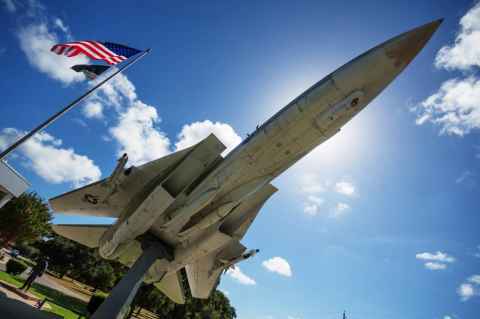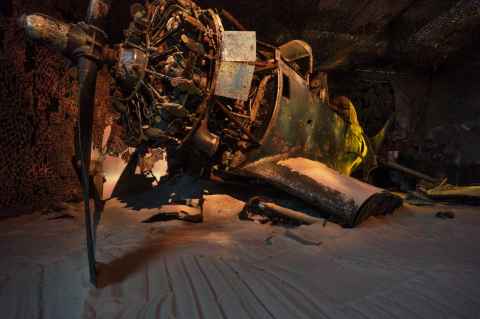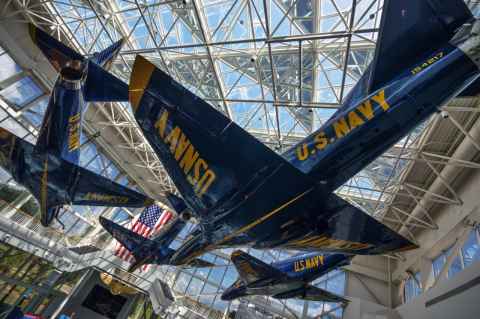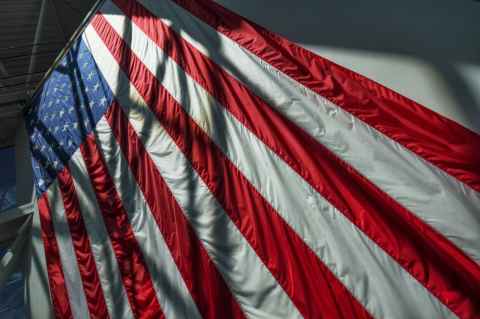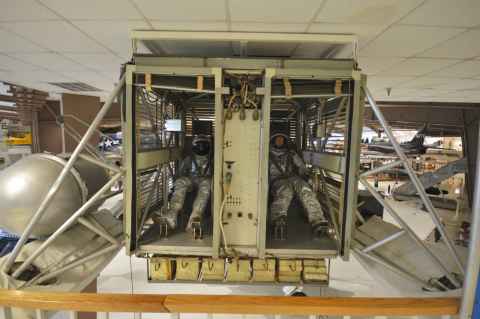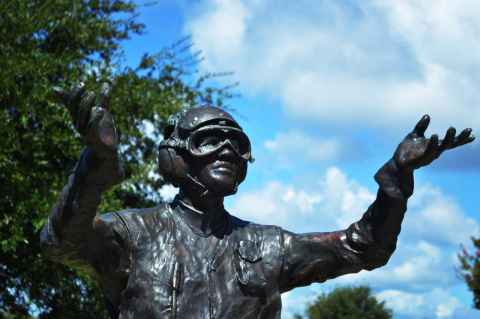
Yellowshirt, the heart of the flight deck.
National Naval Aviation Museum
2014-09-02 10:50

The pilot.
National Naval Aviation Museum
2014-09-02 10:52

Bofors 40mm[b] cannon, in anti-aircraft twin mount.
National Naval Aviation Museum
2014-09-02 11:41
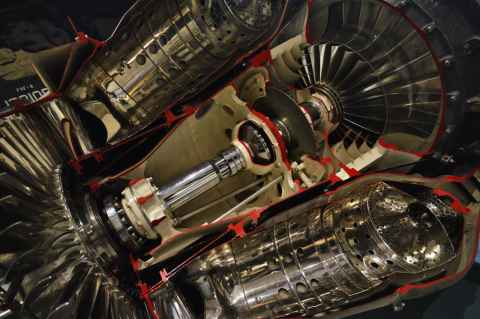
Radial flow gas turbine. The compressor is to the top-right, turbine at the bottom left, combustors top-left and bottom right.
National Naval Aviation Museum
2014-09-02 11:55
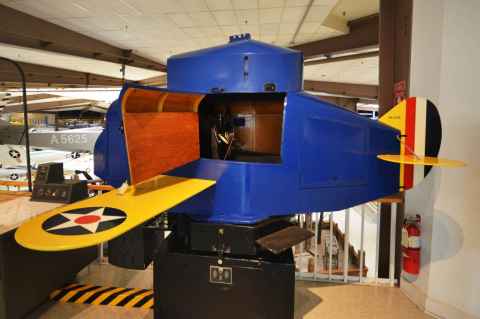
"I tested for the Air Force, and they said I could have this."
It looks like a mall ride, or alternatively the short yellow bus for combat pilots, but is actually a very successful flight simulator called the Link Trainer[c]. Created by Ed Link and manufactured by his company Link Aviation Devices, it was used from the mid-1930s to the late 1950s to train pilots in instrument flying - that is, when you don't get to look outside while flying because it's too dark, or too cloudy, or some other reason that makes it impossible to look out the window and figure out where you are and where you are pointing the aircraft. During World War II, the United States could churn out combat aircraft like no other nation. Having a cheap and safe way to teach the basics of instrument flying was certainly a boost, making "production" of pilots that much more efficient.
National Naval Aviation Museum
2014-09-02 12:16
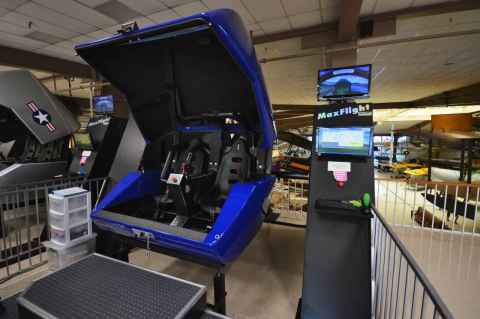
This was the funniest bit of the museum. The pod seen here is mounted on an arm that gives it the ability to spin around the pitch and roll axis. Couple that with 3d-glasses, a good joystick, and the minutes (I think it was three) you get will pass by in no time at all.
National Naval Aviation Museum
2014-09-02 12:31
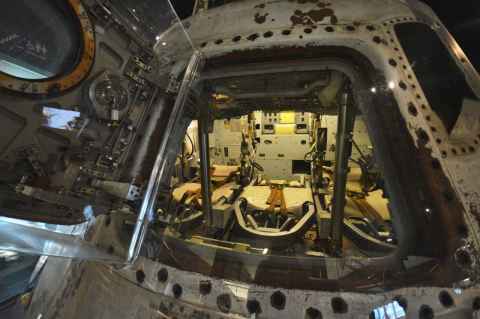
Skylab 2 / Crew 1[d] Apollo capsule.
National Naval Aviation Museum
2014-09-02 12:42
